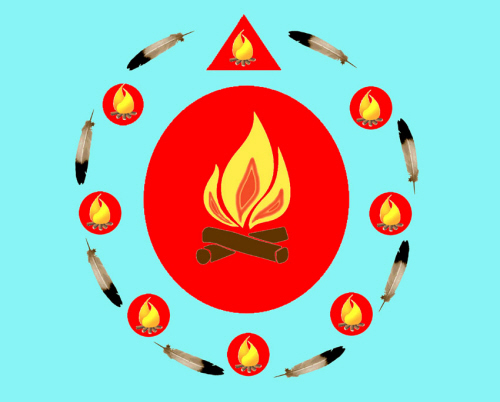 |

 |
 |

 |

The Talking Circle is a traditional instrument for dealing with the things that interfere with the normal everyday concerns of a person or their community whether the concern is trivial or serious in nature. The Circle may be applied safely and confidentially to resolve conflicts, misconceptions, disagreements or deeper problems.
It can be taken as both, an opening or a closing of a door, depending on the individualís circumstances or the objective in mind.
A Talking Circle is a place of comfort, wisdom, security and redress. It is where people come in search for new directions, abandoning the old, making amends, righting the wrongs and establishing new pathways for tomorrow.
It is a sacred place that is usually directed by a Circle leader, a mentor or a person of distinct nature and attachment to the spirit realm who intervenes and directs the flow of collective energies in the Circle.
The Talking Circle consists of a number of people, ranging from two to twenty for the best results, gathered together in a circular formation to share ideas, hopes, dreams, cares and energies in total unity and a sacred connection to one another.
It is also a place where individuals come to seek help, support, healing and understanding for any particular discomfort or instability they may have, or has been with them for some time.
The Circle is a protective shield of honesty, trust and comfort.
Confidentiality:
The material brought to the Circle is usually private, personal and/or confidential. As a general rule therefore, all material heard in the Circle stays in the Circle, unless a waiver or consent has been rendered beforehand.
The description of how and why First Nations People use Talking Circles (The Talking Circle shown above was designed and produced by Pat Paul) to restore harmony to their communities was written by Pat Paul, who is also the publisher and editor of the Wulustuk Times, a monthly publication. It was published in the November 2007 issue of the paper.
Pat is a member of the Maliseet First Nation Community of Tobique, located in New Brunswick, Canada. He can be contacted at: pesun@nbnet.nb.ca
A PLACE FOR PEACE, HARMONY AND REFLECTION